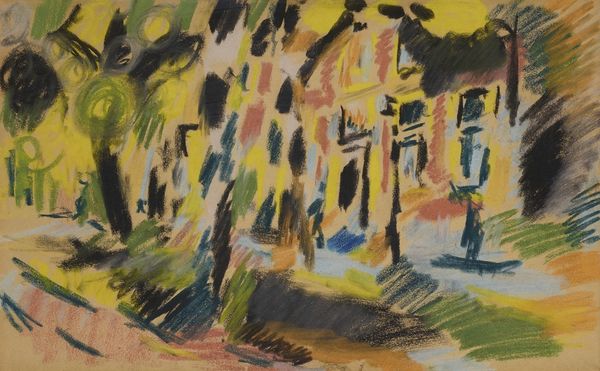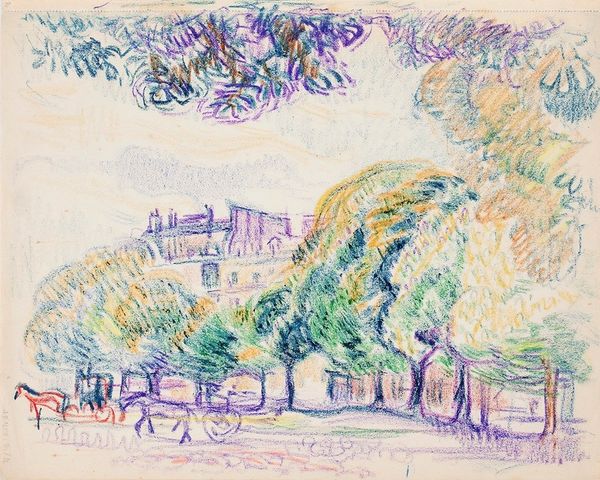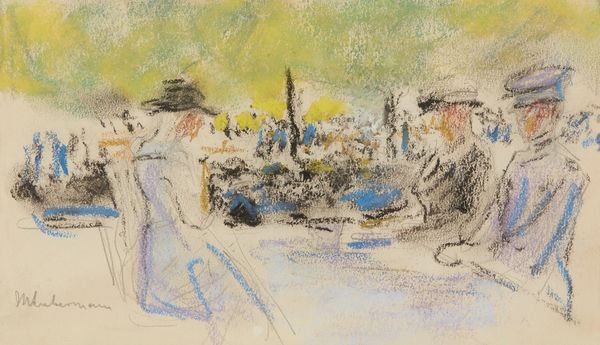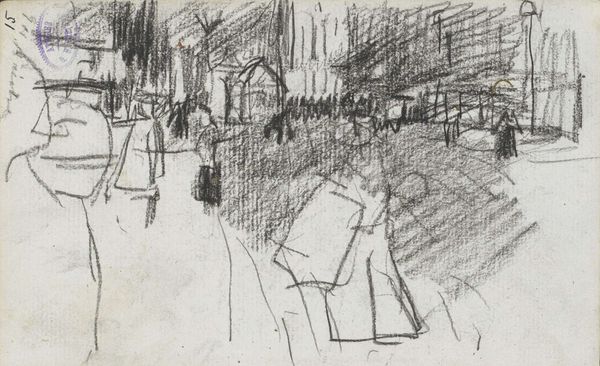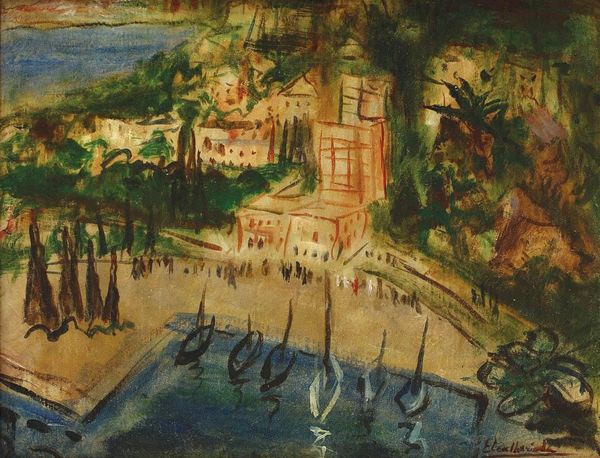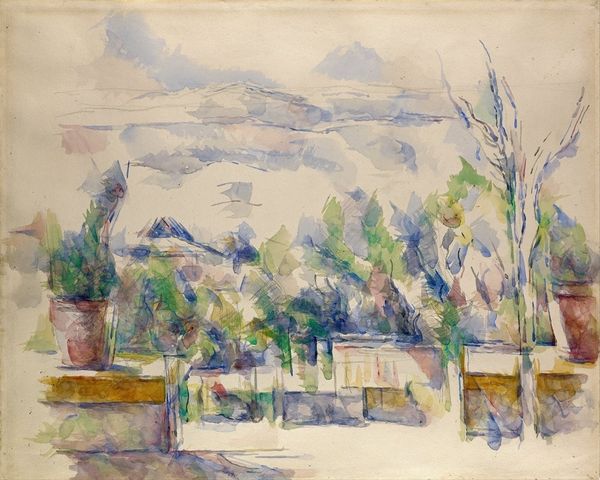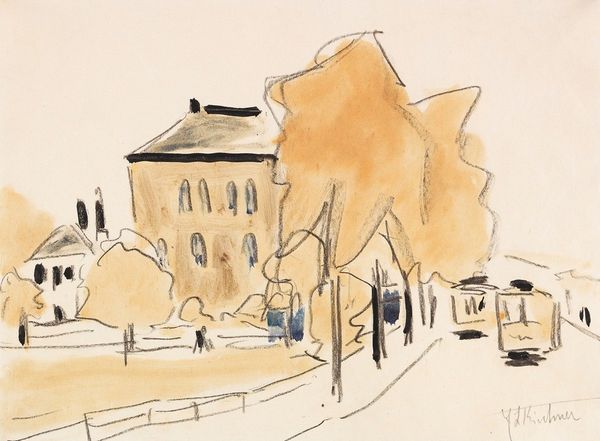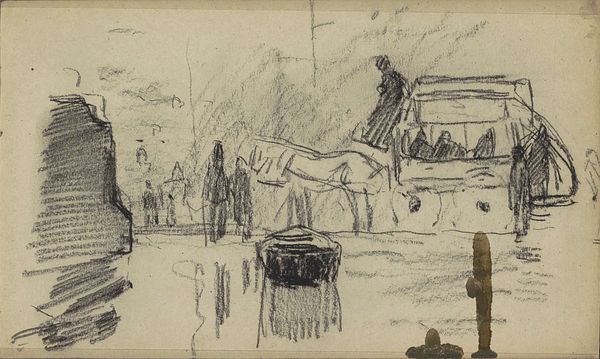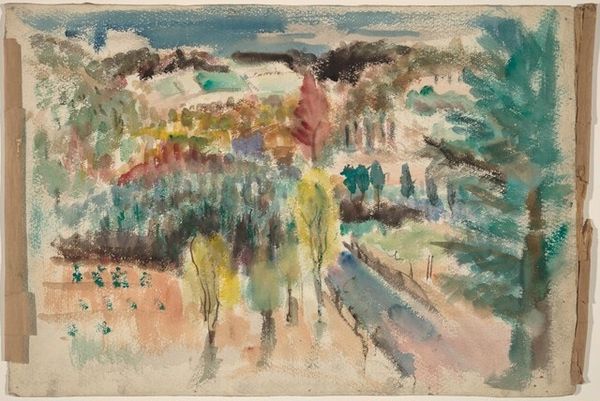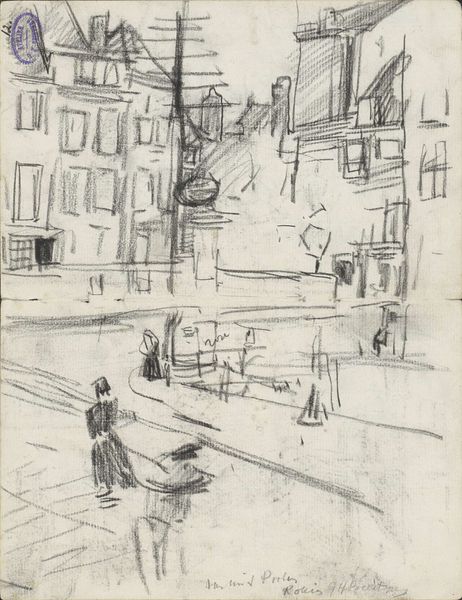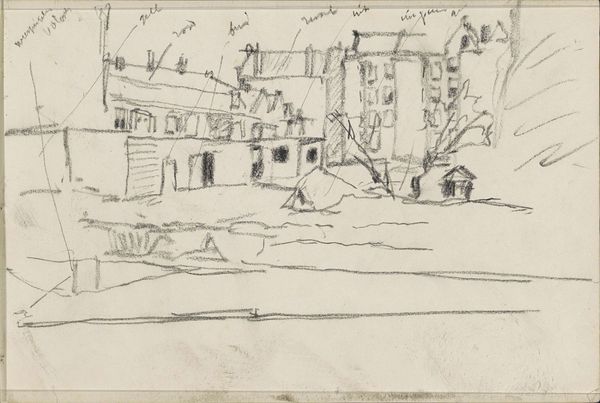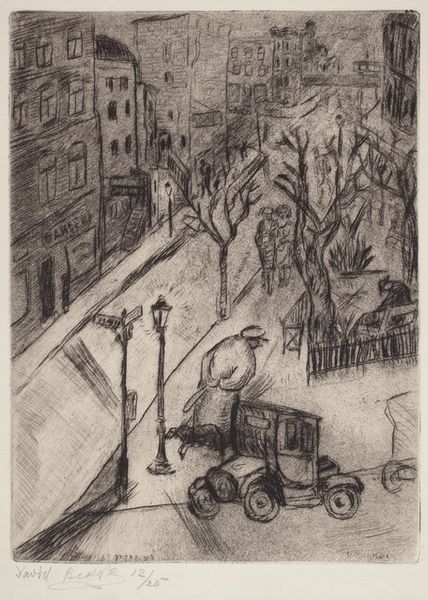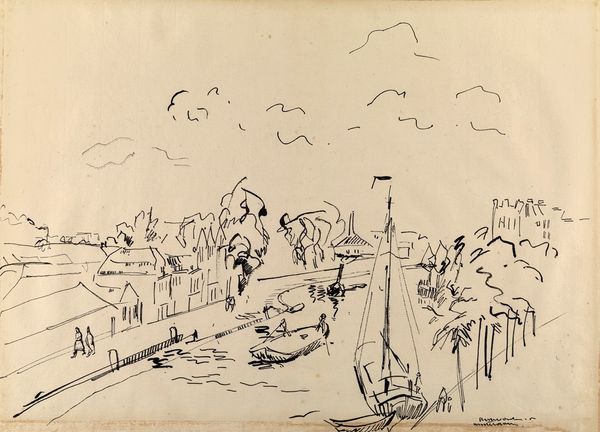
drawing, pen
#
drawing
#
fauvism
#
street-art
#
landscape
#
figuration
#
expressionism
#
line
#
pen
#
cityscape
Copyright: Public Domain: Artvee
Editor: This is Ernst Ludwig Kirchner's "The Bosquet In Albertplatz In Dresden" from 1910-1911, a pen and drawing capturing a street scene. It's so vibrant, almost feverish, with these loose lines. What strikes you most about it? Curator: Kirchner gives us a glimpse into pre-war Germany through a distinct Expressionist lens. Notice the dynamic, almost frantic lines. What might those rapid strokes convey about Kirchner's perception of modern urban life and the people within it? Editor: It feels anxious, maybe a little claustrophobic, even though it’s an open space. Is he making a statement about societal pressures? Curator: Absolutely. As part of Die Brücke, Kirchner and his fellow artists sought to challenge bourgeois norms. Consider how the distorted figures, bold colors, and somewhat crude lines reflect a sense of alienation and unease with the rapid changes in society. What do you make of the use of line in terms of communicating emotion and social commentary here? Editor: The lines do create this unsettled feeling, it isn’t calming at all. And they emphasize this feeling of disconnect between people. Curator: Precisely. It is a powerful portrayal of social alienation, critiquing the superficiality of modern urban existence and offering us a raw emotional honesty. Editor: I’ll definitely look at Kirchner’s work differently now. Seeing the social critique within the artistic choices makes it more compelling. Curator: Understanding the historical and social context deepens our connection with art, helping us recognize these critiques across art history and how these messages can be re-contextualized in contemporary conversations.
Comments
No comments
Be the first to comment and join the conversation on the ultimate creative platform.
